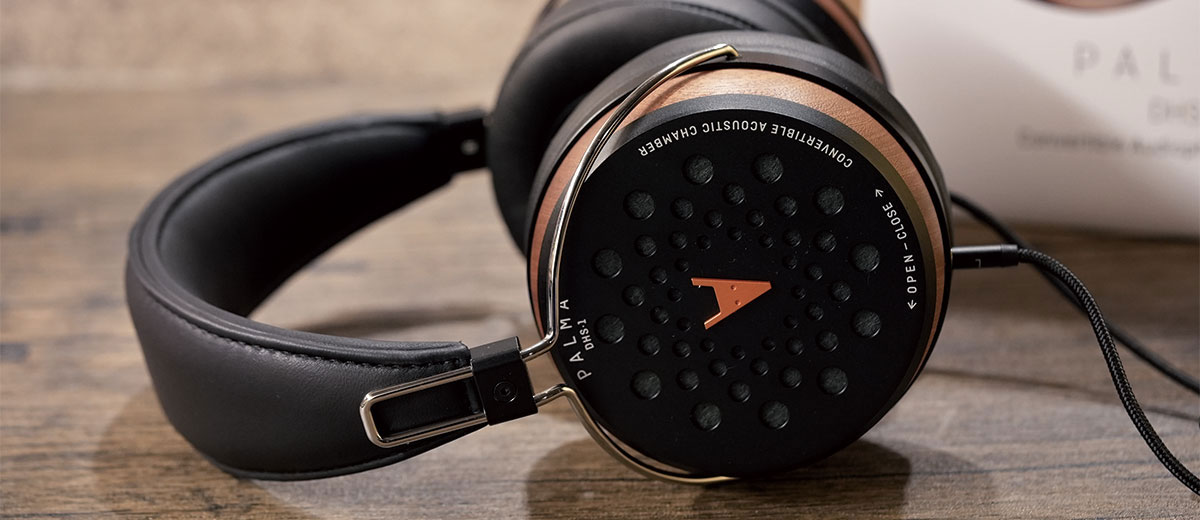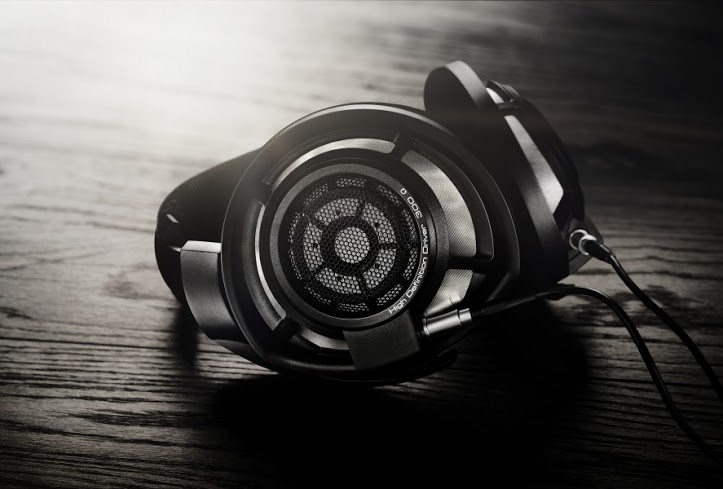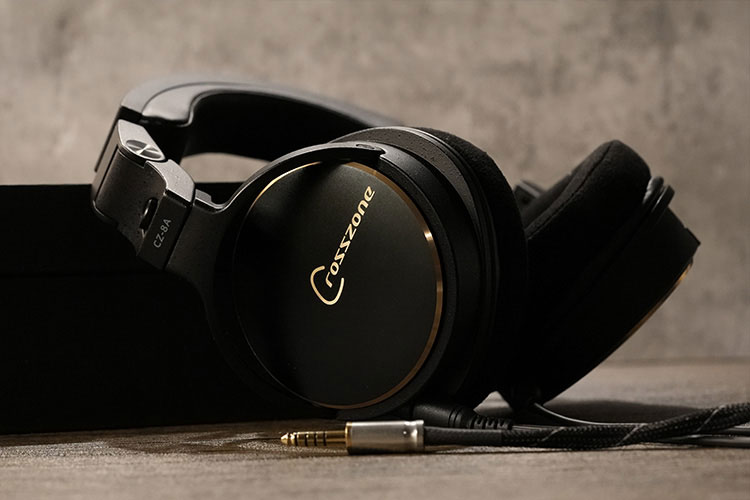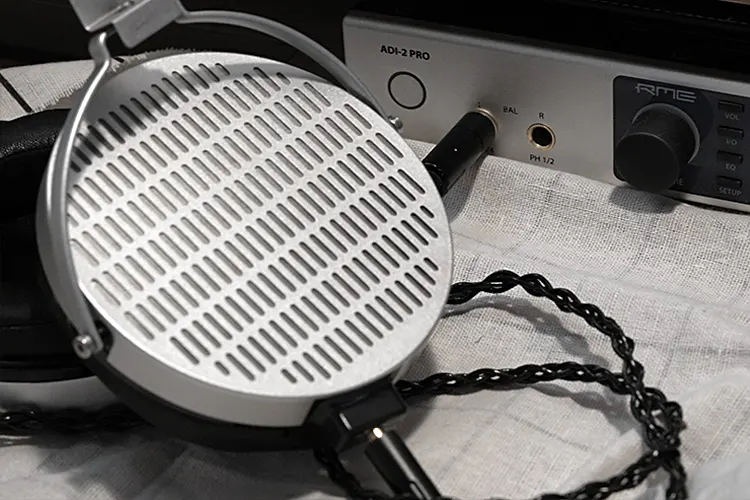Synergy
The DHS-1 remains quite quiet with both closed and opened mode, but you can still hear a faint hiss being picked up when switching to higher gain due to its sensitivity. That said, the DHS-1 is quite responsive to power and would not need the stronger gain to sound dynamic.
Pairings
By using dynamic drivers, the DHS-1 has the advantage of being less demanding in terms of power swings compared to planar designs.
Its sensitivity is relatively high for a high-end headphone. Even without amplification, the DHS-1 performs quite well, yet it has room to scale with better decoding and a strong amplifier.
Pairing the Palma DHS-1 with the HiBy R6 Pro II, the sound is dense in the mids and notably dynamic, with decent definition. The soundstage is stretched wide, while vocals are slightly more intimate in positioning and thickened with this pairing, though still presented in a fairly neutral manner.
When paired with the Shanling M7‘s warm timbre, the texture and richness in the mid-lows are enhanced, making vocals sound lusher without sacrificing resolution or image focus. This pairing is enjoyable, and I’m impressed by how well the DHS-1 performs even with portable gear.
Further testing with the RME ADI-2 Pro, which offers stronger decoding power, reinforces the mids with more texture, while separation is noticeably enhanced.
A subtle warmth in the mid-lows lends a neutral-warmish tonality, striking an excellent balance between analytical precision and full-bodied richness. Vocals exhibit good weight, complemented by brilliance in the upper frequencies.
The added control and texture contribute to a more euphonic experience, and distortion remains well-controlled even at higher volumes.
I also had the opportunity to pair it with the Chord Hugo 2, yielding results similar to the ADI-2 Pro. This pairing enhances the texture in both the mids and treble while retaining the openness and speed that make the DHS-1 stand out.
Select Comparisons
Sennheiser HD 800S
Technical
The Sennheiser HD 800S with an open-back design uses a 56mm dynamic driver, with an impedance rating of 300Ω and sensitivity at 102 dB/1V RMS, it is quite a bit hungrier for swings and current compared to the DHS-1.
Design
The HD 800S retains the iconic design of the HD 800, with its driver slightly angled for enhanced sound projection.
Its frame is lightweight, consisting primarily of plastic components, in contrast to the DHS-1’s full metallic and wood construction. This makes the DHS-1 slightly heavier but provides a more premium feel when held.
While the thick cable on the HD 800S appears more premium, it is far less portable. I prefer the lighter profile of the DHS-1, which makes it suitable for outdoor use.
Additionally, the inclusion of multiple cables with different connectors for the DHS-1 adds versatility and simplifies pairing with various devices.
Performance
While the HD 800s has enhanced sensitivity over the HD 800 it is still quite a bit more power-hungry than the DHS-1, which requires less swing and current but better decoding to sound full and dynamic.
In fact, the same gain level that works great with the HD 800s may push the vocal too forward for the DHS-1, thus the conditions for the two to scale are quite different.
The HD 800s has its vocal slightly more laid-back. The vocal harmonics are more conservative and rounded compared to the DHS-1 which has more brilliance in its upper register no matter if it is in closed or opened mode.
When tested with the RME ADI-2 Pro, the HD 800s exhibit a more holographic and controlled sound signature. Bass on the HD 800s is elaborated and layered, albeit not as clean, powerful in penetration, and separated in the vocal range as the DHS-1.
The DHS-1 excels in presenting nuances and air with clarity, also feeling less colored. The timbre works better with strings and brass instruments. Whereas the HD 800s feel less expressive, appearing somewhat restrained in their delivery despite sounding more controlled.
Crosszone CZ-8A Enhanced
Technical
The Crosszone CZ-8A Enhanced designed and made in Japan is one of the most special items tested this year, with 3 drivers under the hood to mimic real-life internal reflections.
The CZ-8A uses Beryllium-plated drivers and has a relatively high impedance rating measured at 75Ω and a sensitivity rating of 100 dB/mW.
Design
The CZ-8A features a Japanese-style paint job and smooth finish. Its turning mechanism is intricately detailed compared to the more minimalist design of the DHS-1.
However, the DHS-1 combines wood and metal elements, adorning the faceplate with vents that serve a dual purpose as tuning shutters.
In terms of design, my preference leans towards the DHS-1 for its innovative mechanism and dual-tone modes. This is an aesthetically pleasing combination of materials and functional elements.
Performance
On a portable source, the CZ-8A is no match to the DHS-1 which is much more easily driven and sounds more resolving and dynamic. A fairer comparison would be with the FiiO K19.
The DHS-1 requires more gain to output a dense image, giving the mid-bass much more weight compared to the DHS-1 and many other headphones.
The mid-lows are nicely thickened while the fast drivers help it to maintain good speed and sense of control, though the enhanced emphasis on the mid-lows also suggests that the bass depth and treble are not as prominent as on the DHS-1.
While the tuning is very different, I find both headphones a good match for instrumentals. The DHS-1 is more suitable for arena-level performances that stress wide across the perceived headroom and extends higher into the treble.
The CZ-8A is lovely with quartets, piano works, and synthesized instruments, where you can feel the weight and timbre of the wooden chambers resonating with extra richness.
The DHS-1 has a more focused vocal image and unaltered tone. The CZ-8A feels like listening through historical gears but with a modern definition, where the harmonics are thickened similar to tube sound.
This is more a preference thing but if you are editing videos or sound with headphones or crave more openness and exciting treble then the DHS-1 is clearly the choice here.
Whereas the CZ-8A renders a very full, rich mid-bass experience that you may not expect from portable headphones.
MOONDROP COSMO
Technical
The MOONDROP COSMO is the only planar headphone compared here. It uses a 100mm FDT driver with an etched pure silver thin film circuit and a nano-scale ultra-thin diaphragm at just 0.500n.
The COSMO is rated with a fairly low impedance value of 15Ω±15% (@1kHz) and a sensitivity rating of 100 dB/Vrms (@1kHz), which is moderately power-hungry.
Design
The COSMO uses an industrial-looking, sheet metal framework and has a simple yet solid construction. It helps keep the weight down compared to the more premium yet heftier housing on the DHS-1.
The finishing on the DHS-1 is also much more refined and smoother to the touch compared to the rougher surface treatment on the COSMO.
The stock cable on the COSMO looks fancier and thicker. It would be more appealing if Palma could consider upgrade options for the cables though technically that may affect its portability.
Earpads are swappable with a magnetic mechanism on the COSMO, which is a feature I enjoyed, allowing switching between different pads as well. However, when comparing the quality of the pads the DHS-1 is a clear winner here with its more premium and soft leather pads.
Performance
With a 100mm driver inside the COSMO offers a stronger punch though that would take quite a lot of power to sound deep and airy.
The DHS-1, although not sounding as full in the bass, is much more easily driven with quicker perceived articulation and improved extension. It sounds more precise and less boosted in the bass.
Coloration is quite a bit stronger on the COSMO. It sounds more mid-centric compared to the slightly treble-tilted DHS-1, which is more natural and open in tone regardless of the pairing.
Good synergy is also more easily achieved on the DHS-1 though it would be quite dependent on the decoding device for texture and control. The COSMO needs coloration and power from the source for its optimal performance.
The DHS-1 sounds as distortion-free as the COSMO with planar technology. While the treble is more pronounced on the DHS-1, it manages to maintain a balanced presentation without becoming excessively bright, preserving dynamics effectively. Sharper tones on the COSMO may come across as somewhat muted and softened.
The DHS-1 also offers a more holographic listening experience with robust treble extension, creating a natural and expansive soundstage. The COSMO, while capable of deeper bass, may sound somewhat artificial and lacks the airy quality found in the DHS-1.
My Verdict
My experience with the Palma DHS-1 was delightful, given its solid build and character, revealing tuning, responsiveness to power and decoding quality.
The innovative rotating shutter which enables instant switching between opened and closed profiles allows users to cycle between better sealing properties and bass, or a more effortless, opened timbre.
It performs well against other established competitors and compared to planars that often have higher powering requirements, the DHS-1 is easier to drive on portable sources. It scales well with potent decoders to give a highly transparent, uncolored sound, making it a nice choice for Pro users.
Overall, the DHS-1 is an enjoyable design and a great attempt as a first product.
Palma DHS-1 Technical Specifications
- Frequency Response (Open-mode): 2-35,000Hz
- Frequency Response (Closed-back mode): 10-30,000Hz
- Sensitivity (Open-mode): 107 dB/1mW
- Sensitivity (Closed-back mode): 109 dB/1mW
- Impedance: 32Ω





